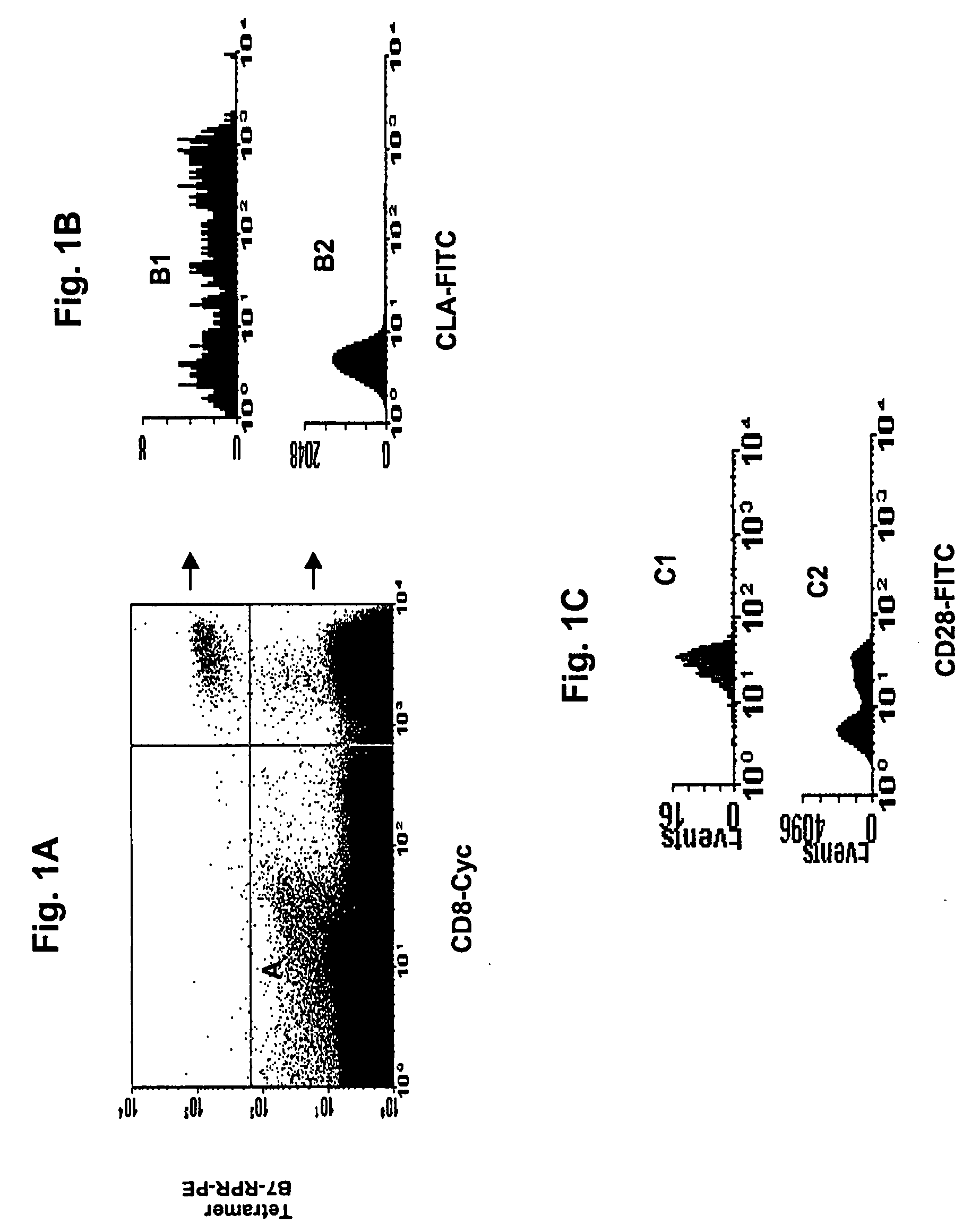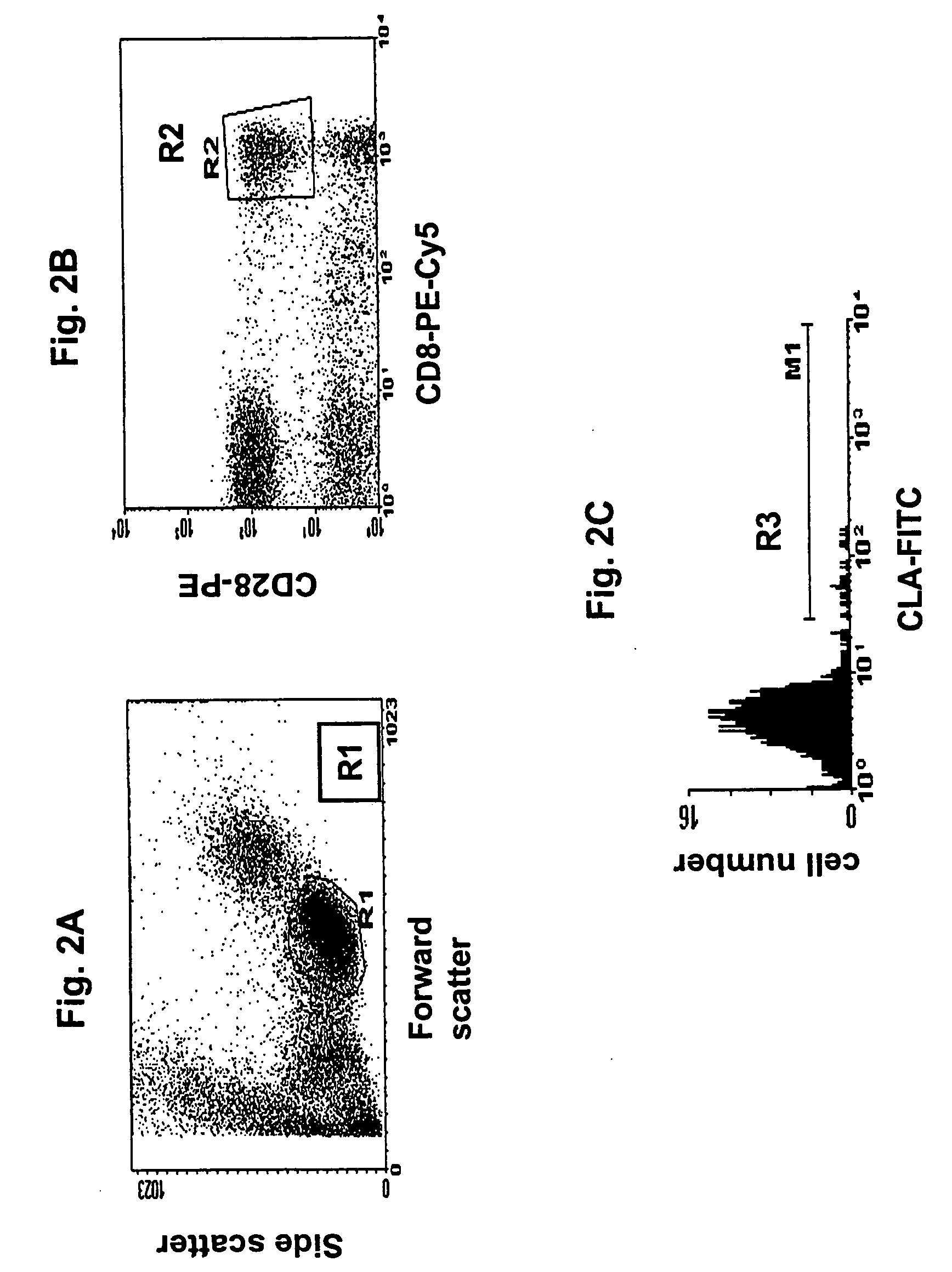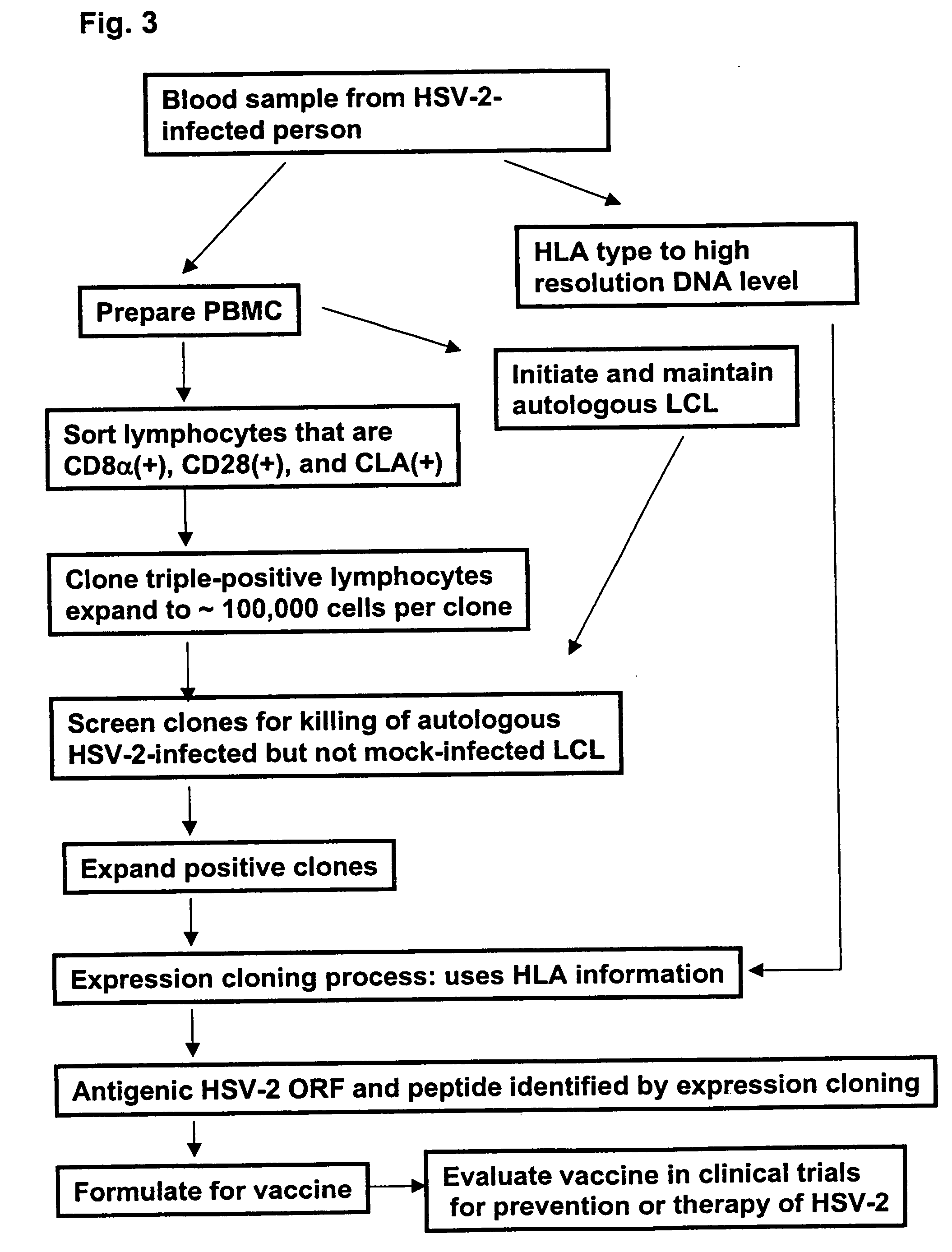Rapid, efficient purification of HSV-specific T-lymphocytes and HSV antigens identified via same
a technology of hsv-specific t lymphocytes and purification methods, applied in the field of hsv proteins, can solve the problems of high health care utilization and pharmacy costs, no licensed preventative vaccine, increased risk of hiv-1 infection, etc., to/or immunomodulatory lymphocytes, enhance the production of hsv-specific antibodies, and enhance the secretion of antiviral
- Summary
- Abstract
- Description
- Claims
- Application Information
AI Technical Summary
Benefits of technology
Problems solved by technology
Method used
Image
Examples
example 1
Expression of Cutaneous Lymphocyte-Associated Antigen and Functional E-Selectin Ligand by CD8+ T-cells Specific for a Skin-Tropic Virus
[0125] This example demonstrates the use of herpes simplex virus type 2 (HSV-2) as a model system to investigate CD8+ T-cell trafficking to the skin in humans. Using HLA class I tetramers, the example shows that HSV-specific CD8+ T-cells in the peripheral blood express high levels of cutaneous lymphocyte-associated antigen (CLA). In contrast, CD8+ T-cells specific for non skin-tropic herpesviruses lacked CLA expression. CLA-positive HSV-2-specific CD8+ T-cells had the characteristics of central memory cells, expressing CCR7, CD62L, and CD28, and proliferate briskly in response to antigen. CLA is related to a functional E-selectin ligand and both E-selectin and CLA-positive cells were detected in HSV-2 infected skin. HSV-2-specific T-cells were found to adhere to cells transfected with E-selectin. A higher proportion of HSV-specific CD8+ T-cells reco...
example 2
Immunodominance Amongst Herpes Simplex Virus-Specific CD8 T-Cells Expressing a Tissue-Specific Homing Receptor
[0154] This Example shows a novel approach to create unbiased panels of CD8 cytotoxic T lymphocyte clones specific for herpes simplex virus type 2. Circulating herpes simplex virus type 2-specific cells were enriched and cloned after sorting for expression of the skin-homing receptor, cutaneous lymphocyte-associated antigen, bypassing re-stimulation with antigen. The specificity of every resultant cytotoxic clone was determined. Clonal frequencies were compared with each other and the total number of cytotoxic clones. For each subject, the specific CD8 cytotoxic T-lymphocyte response was dominated by T-cells specific for only a few peptides. Newly described antigens and epitopes in viral tegument, capsid, or scaffold proteins were immunodominant in some subjects. Clone enumeration analyses were confirmed in some subjects with bulk T-cell cultures using herpes simplex mutant...
PUM
| Property | Measurement | Unit |
|---|---|---|
| volumes | aaaaa | aaaaa |
| volumes | aaaaa | aaaaa |
| width | aaaaa | aaaaa |
Abstract
Description
Claims
Application Information
 Login to View More
Login to View More - R&D
- Intellectual Property
- Life Sciences
- Materials
- Tech Scout
- Unparalleled Data Quality
- Higher Quality Content
- 60% Fewer Hallucinations
Browse by: Latest US Patents, China's latest patents, Technical Efficacy Thesaurus, Application Domain, Technology Topic, Popular Technical Reports.
© 2025 PatSnap. All rights reserved.Legal|Privacy policy|Modern Slavery Act Transparency Statement|Sitemap|About US| Contact US: help@patsnap.com



